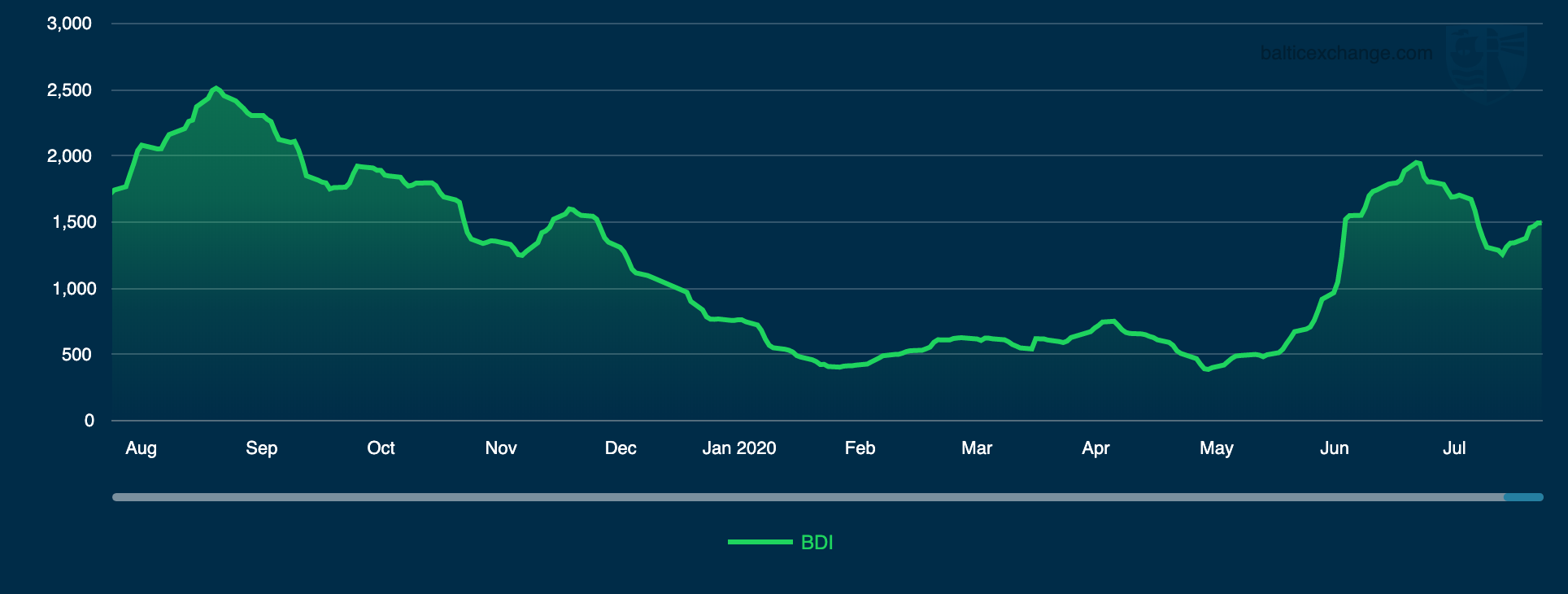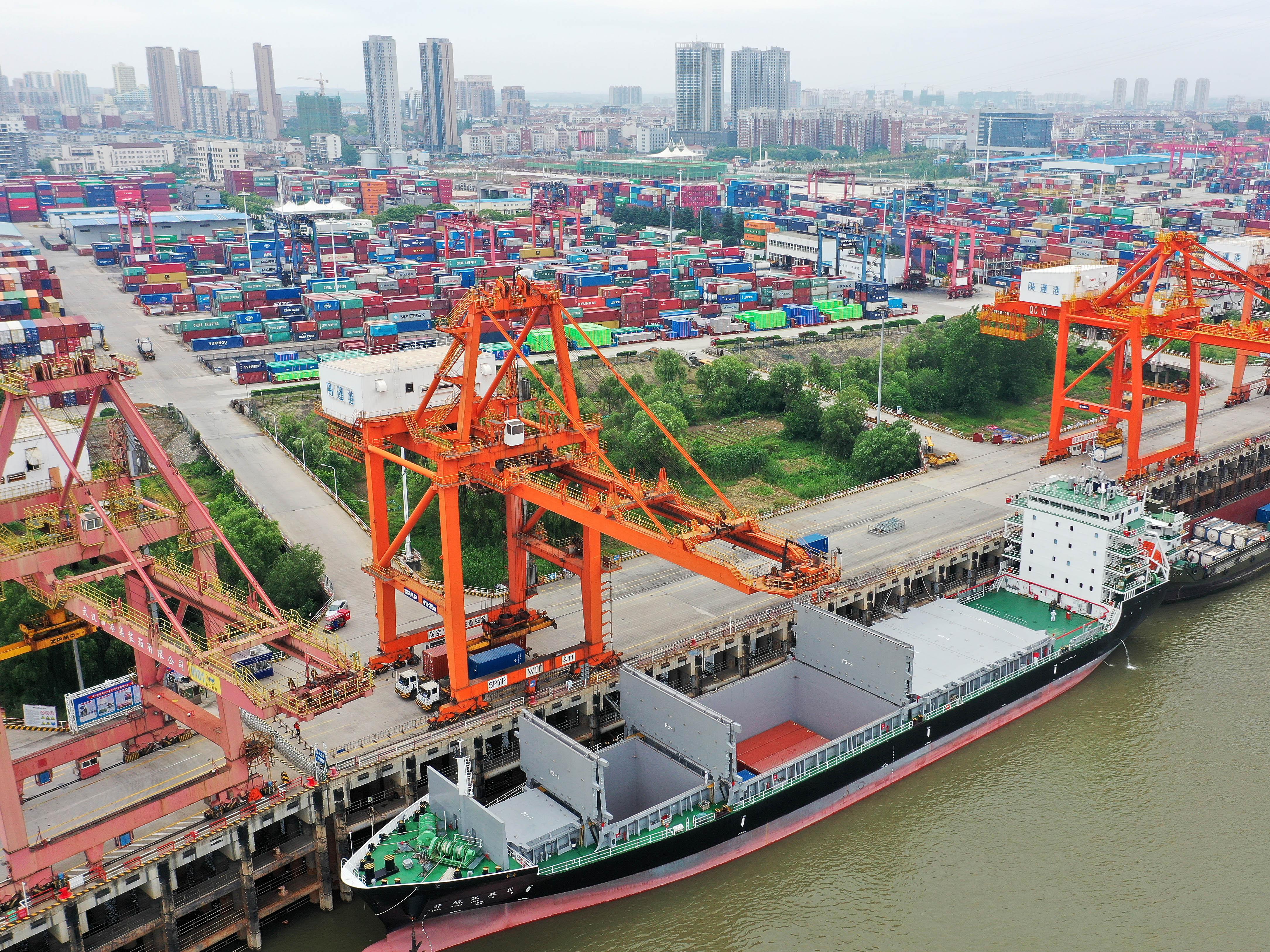BEIJING, Aug. 10 (Xinhua) -- The Baltic Exchange plans to hold a webinar themed "using Baltic Exchange Data and Forward Freight Agreements (FFA) to track and manage freight market risks" on August 13.
The webinar, to be presented in mandarin, will kick off with an introduction on how to track freight market performance, followed by a session on how to hedge freight rate volatility in the dry bulk market using FFAs, and close with an overview of FFA clearing and margining efficiencies.
More details about the webinar can be found at: balticexchange.com/en/news-and-events.
Headquartered in London and a subsidiary of the Singapore Exchange (SGX), the Baltic Exchange publishes a range of indices and assessments which provide an accurate and independent benchmark of the cost of transporting commodities and goods by sea. These include the Baltic Dry Index (BDI), the dry bulk shipping industry's best known indicator. Published daily since 1985, this provides a snapshot of the daily spot market earnings of capesize, panamax and supramax vessel types on the world's key trading routes.


Chart shows Baltic Dry Index (BDI) during August 2019 to July 2020.
In March 2018 the BDI was re-weighted and is published using the following ratios of timecharter assessments: 40 percent capesize, 30 percent panamax and 30 percent supramax. The information is provided by a panel of international shipbrokers.
The Baltic Exchange has also published its weekly report of the dry and tanker markets for August 3-7, 2020 as below:
Capesize
The capesize market appears to have broken out of its recent downward trend and moved into a range bound period trading largely sideways this week. Timecharter spreads between the two basins now stands with the Pacific $3143 over the Atlantic. Voyage rate volatility persisted this week as wild swings in both directions were seen, although fixture volumes were not thought to be particularly high. The west Australia to China C5 was up week on week yet ended on a down note to close at $8.55. The Brazil to China C3 experienced a brief lift early in the week before turning down and seeming to gather momentum. Ballaster numbers on the route are said to be high and applying downward pressure. Quarantine measures reappeared this week in an unwanted reminder of the evolving COVID-19 situation. Northern Chinese ports were heard to be reinstituting 14 day restrictions for vessels arriving to the region, although full details of the restrictions are known.
Panamax
It was a week that yielded impressive gains for Panamax owners, with meaningful rises in both basins. The Atlantic improved drastically with substantial grain demand ex US Gulf, as well as a rise in mineral cargo - especially for coal exports from the Baltic sea. With a tight North Atlantic tonnage count and subsequent rising offers, charterers with US Gulf and EC South American grain to move sourced tonnage from the Far East. A more viable option in particular was the neo-panama canal types. The owners were willing to grant options for both loading areas with the highlight being an 82,000 dwt fixing $14,500 delivery Malaysia. This strengthened rates in an already rising Asian basin with high coal demand noticeably coming from Australia during the week which was destined for India and China. An improving spot and FFA market lent support to some period cover, including an 82,000dwt delivery Sri Lanka agreeing $12,500 for 9/13 months trading.
Ultramax/Supramax
A broadly weaker market this week, with all routes - except the Black Sea fronthaul - posting incremental daily losses as the market struggled to find a clear direction. The timecharter average duly lost $69 to close at $9408 on the week, with the S9 Brazil backhaul proving one of the biggest losers on lower cargo enquiry. Some commentators maintained that a two tier market had developed, with the larger ultramaxes able to compete for Panamax stems, whilst the more standard types were compelled to bide their time. Representative fixtures included the Bulk Jamaica (2018 63,747) which was fixed to Cefetra at $12,000 delivery Brazil for a trip Mediterranean with prompt delivery, whilst for the fronthaul, the Dionysus (2015 63,159) was said to have secured $13,000 plus $300,000 ballast bonus from Omegra. The one bright spot remained the Black Sea - gaining $1364 to close at $20,500 on the week, on strong cargo enquiry - in the latter part of the week, the Cas Amares (2011 55,783) was said to have fixed basis delivery Constanza for a fronthaul with grain at $18,100.
Handysize
The week was largely flat with two Handy routes remaining in the positive territory with other key areas under pressure. Tonnage was described to be tight in the Continent for prompt dates with rates further kicking. Since the middle of the week, brokers saw more cargoes from the Baltic area to west Mediterranean and helped the relevant HS1 and HS2 route to a consecutive uprising trend since the second half of May. A large Handy vessel was fixed from east Mediterranean for a trip to the Caribbeans at $10,850. A 37,000dwt delivery Balboa in mid August was fixed for a trip via west coast South America to the Far East at $14,000. On the period front, a 33,000dwt open mid August in the Mediterranean was fixed for five to seven months at $9,500. In the east, brokers suggested the Pacific market remained flat with fixtures done around $5,000 to low $6,000s for a CIS trip from the Far East. A 30,000dwt delivery Japan was fixed for moving steel to Southeast Asia at $5,500. A 38,000dwt delivery Vanino, meanwhile, was fixed for a similar run to the Philippines at $8,300 also with steel.
Clean
In the Middle East Gulf, rates for 75,000mt to Japan have been under pressure. After starting the week in the high WS50S, Clearlake were able to finally set the tone and fix BW tonnage at WS55. In the 55,000mt trade, rates were steady at WS60 level. It was a disappointing week for owners plying the 37,000mt UKC to USAC trade with the market easing from WS102.5 a week ago to WS95. This is last seen fixed here but brokers feel there is potential for further softening - and the market now is assessed in the low WS90s. In the backhaul business from the US Gulf, charterers have generally held the upper hand and have been able to chip away at rates which have eased now from WS102.5 level a week ago to sit at close to WS 92.5. It was another uninspiring week for owners in the 30,000mt clean cross-Med trade with rates only able to nudge up at best five points to WS85 and there is still plenty of early tonnage available.
VLCC
A quiet week in the Middle East resulted in little movement on the rates. 280,000mt Middle East Gulf to USG via the Cape/Cape routing still being assessed at the WS21 level and 270,000mt to China slipped a couple of points to W33/34 region.
In the Atlantic, 260,000mt West Africa to China nudged down similarly to WS37.5, while a more active USG export market saw four ships reported on subjects at levels between $5.35m and $5.3875m for the 270,000mt US Gulf to China trip, which is now assessed at $5.38-5.39m level. That's modestly up about $60k from last week.
Suezmax
Rates for 135,000mt Black Sea/Med managed to climb 7.5 points to WS62.5-63 region while 130,000mt West Africa/UKContinent gained a meagre 2 points to WS49-50 level. The 140,000mt Middle East Gulf to Med trade remained static at around WS23.
Aframax
In the Mediterranean market, owners came under pressure again and rates have eased about a point to WS57.5 for 80,000mt Ceyhan/Med. In Northern Europe, rates for 80,000mt Cross-North Sea increased three points to about WS82.5, while 100,000mt Baltic/UKCont saw a similarly positive effect to close to WS57.5. Across the Atlantic rates have marginally increased with the 70,000mt Carib/USGulf trade now at WS78, up a couple of points. 70,000mt USGulf/UKCont voyages are five points higher than a week ago at WS80.
(Source: The Baltic Exchange, edited by Gu Shanshan with Xinhua Silk Road, gushanshan.1987@163.com)




 A single purchase
A single purchase









